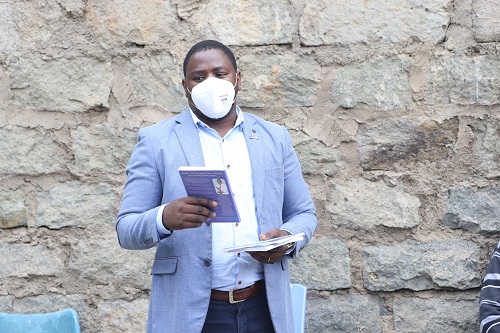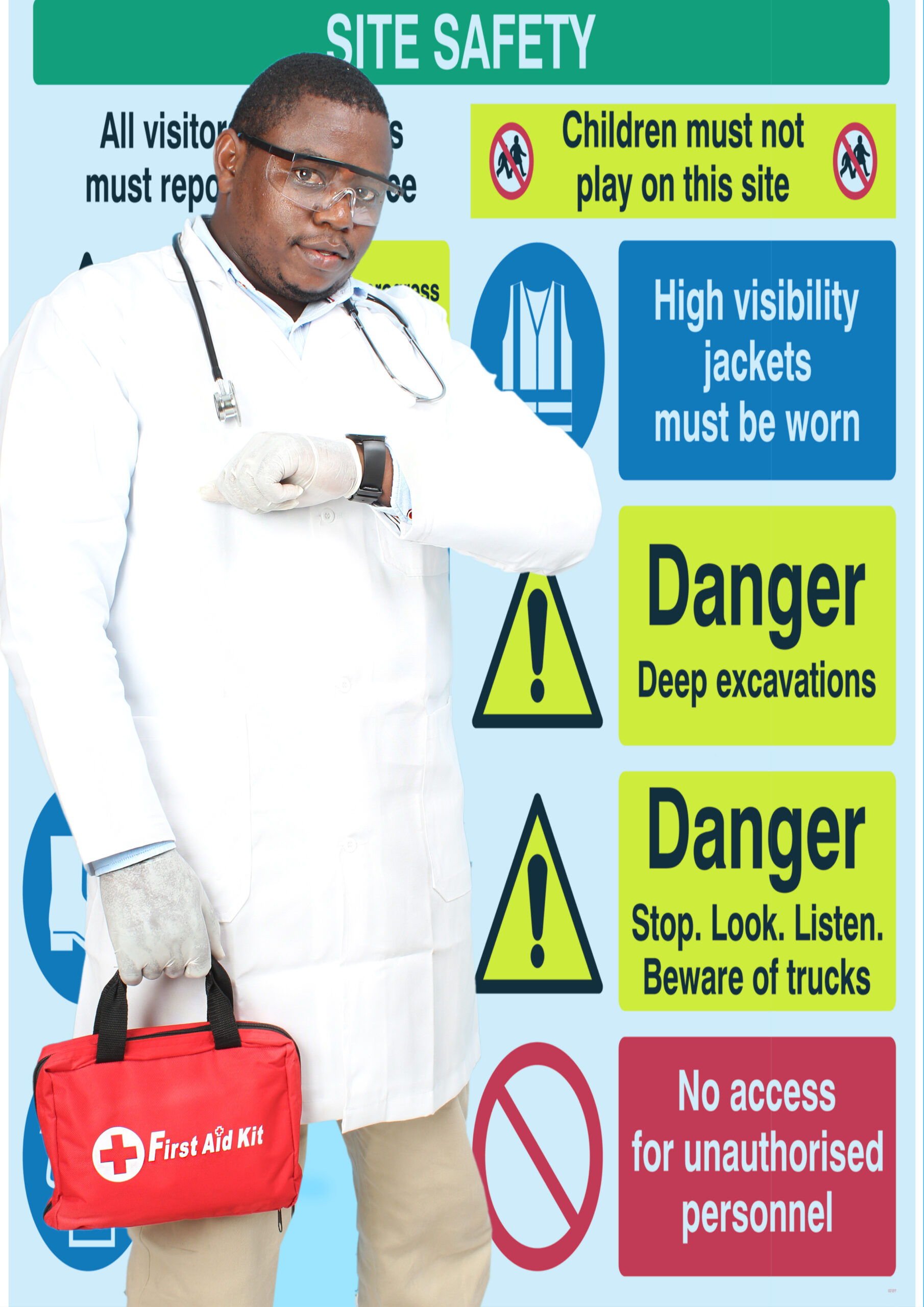Fire safety is an essential aspect of workplace security and preparedness, impacting employee safety and business continuity. As Ambassador Steve Mbugua, the globally acclaimed Ambassador of Safety, I am committed to promoting fire safety awareness and best practices across all sectors. This article explores crucial fire safety strategies, from fire risk assessments and emergency preparedness to the implementation of fire prevention measures and compliance with safety regulations. By prioritizing fire safety, organizations can significantly reduce the risk of fire-related incidents and protect their people and assets. Let us delve into the key components of effective fire safety management and foster a culture of safety and resilience.
Introduction to Fire Safety
Fire safety involves measures and practices designed to prevent fire incidents and to ensure the safety of individuals and property in the event of a fire. Fire safety encompasses understanding fire causes, classifications, preventive measures, emergency responses, and recovery procedures. Ensuring robust fire safety protocols is crucial for safeguarding lives, protecting property, and maintaining compliance with legal regulations.
Causes of Fire
Fires can start from various sources, often categorized into common causes:
1. Electrical Faults: Short circuits, overloaded circuits, faulty wiring, and malfunctioning electrical equipment.
2. Open Flames: Candles, matches, lighters, and open fires.
3. Heating Equipment: Faulty or improperly used heaters, furnaces, and boilers.
4. Cooking: Unattended cooking, grease fires, and malfunctioning cooking equipment.
5. Smoking Materials: Cigarettes, cigars, and pipes not properly extinguished.
6. Flammable Liquids: Improper storage and handling of flammable liquids such as gasoline, alcohol, and solvents.
7. Combustible Materials: Accumulation of paper, wood, cloth, and other combustible materials near heat sources.
8. Chemical Reactions: Improper storage and handling of reactive chemicals.
9. Arson: Intentional setting of fires.
10. Natural Causes: Lightning strikes and wildfires.
Classes of Fire
Fires are classified based on the type of fuel involved. Understanding fire classes is essential for choosing the appropriate extinguishing method:
1. Class A: Fires involving ordinary combustibles such as wood, paper, cloth, and plastics.
2. Class B: Fires involving flammable liquids like gasoline, oil, and alcohol.
3. Class C: Fires involving electrical equipment and appliances.
4. Class D: Fires involving combustible metals like magnesium, sodium, and potassium.
5. Class K (or F): Fires involving cooking oils and fats in kitchen appliances.
Types of Fire Extinguishers
Different types of fire extinguishers are designed to combat specific classes of fire:
1. Water Extinguishers: Effective on Class A fires.
2. Foam Extinguishers: Effective on Class A and Class B fires.
3. Dry Powder Extinguishers: Effective on Class A, B, and C fires.
4. CO2 Extinguishers: Effective on Class B and Class C fires.
5. Wet Chemical Extinguishers: Effective on Class K (or F) fires.
6. Class D Extinguishers: Specifically for combustible metal fires.
Latest Trends in Fire Safety
1. Smart Fire Detection Systems: Use of IoT-enabled devices for real-time fire detection and alerting.
2. Advanced Fire Suppression Systems: Enhanced sprinkler systems and water mist systems.
3. Fireproof Building Materials: Use of fire-resistant materials in construction.
4. Integrated Fire Safety Solutions: Combining fire detection, suppression, and evacuation systems.
5. Wireless Fire Alarms: Eliminating the need for extensive wiring and enabling easy installation.
6. Drones for Fire Surveillance: Using drones for monitoring large areas and detecting fire outbreaks.
7. Fire Safety Apps: Mobile applications for real-time fire safety information and emergency response guidance.
8. Enhanced Evacuation Procedures: Use of virtual reality for evacuation training.
9. AI and Machine Learning: Predictive analytics to identify fire risks and improve response times.
10. Green Fire Suppression Agents: Environmentally friendly fire suppression chemicals.
11. Fire Safety Training Programs: Online and VR-based training modules.
12. Regulatory Compliance Tools: Software for ensuring adherence to fire safety regulations.
13. Emergency Lighting Systems: Advanced LED lighting for emergency exits and pathways.
14. Heat and Smoke Barriers: Improved barriers to contain and control fire spread.
15. Community Fire Safety Initiatives: Public education and community-based fire safety programs.
Fire Audits and Inspections
Fire audits and inspections are essential components of fire safety management, ensuring compliance with fire safety regulations and identifying potential hazards. Regular audits and inspections help maintain a safe environment and improve preparedness.
Key Elements of Fire Audits:
1. Risk Assessment: Identifying potential fire hazards and evaluating the risk.
2. Compliance Check: Ensuring adherence to fire safety regulations and standards.
3. Equipment Inspection: Checking the functionality and condition of fire detection and suppression systems.
4. Evacuation Plan Review: Assessing the effectiveness of evacuation procedures and routes.
5. Training Evaluation: Reviewing the adequacy of fire safety training programs.
6. Documentation: Verifying that fire safety records and maintenance logs are up-to-date.
Fire Safety Training
Fire safety training is crucial for educating employees and individuals on fire prevention, emergency response, and evacuation procedures. Effective training programs enhance awareness, improve response times, and save lives.
Types of Fire Safety Training:
1. Fire Prevention Training: Educating on fire hazards, prevention techniques, and safe practices.
2. Fire Extinguisher Training: Hands-on training on using different types of fire extinguishers.
3. Evacuation Drills: Conducting regular fire drills to practice safe evacuation procedures.
4. Emergency Response Training: Training on roles and responsibilities during a fire emergency.
5. Fire Warden Training: Specialized training for designated fire wardens.
6. First Aid Training: Basic first aid skills for fire-related injuries.
7. Fire Safety Awareness Programs: General awareness sessions for all employees.
8. Customized Training: Tailored training programs for specific industries or workplaces.
Fire Safety Installations
Proper installation of fire safety systems is critical for ensuring effective fire detection, suppression, and evacuation.
Key Fire Safety Installations:
1. Fire Alarm Systems: Installing and maintaining fire alarms and smoke detectors.
2. Sprinkler Systems: Installing automatic sprinkler systems for fire suppression.
3. Emergency Lighting: Ensuring adequate emergency lighting for safe evacuation.
4. Fire Extinguishers: Placing fire extinguishers in accessible locations.
5. Fire Doors: Installing fire-rated doors to contain and control fire spread.
6. Heat and Smoke Detectors: Using advanced detectors for early fire detection.
7. Fire Hydrants: Ensuring availability and accessibility of fire hydrants.
8. Fire Suppression Systems: Installing systems like gas suppression for specific environments.
9. Escape Routes and Signage: Clearly marking and maintaining escape routes and emergency exits.
10. Fire Panels: Centralized control panels for monitoring and managing fire safety systems.
Laws or Regulations That Apply to Fire Safety
1. National Fire Protection Association (NFPA) Codes: Comprehensive standards for fire safety.
2. International Fire Code (IFC): Provides regulations for fire safety in buildings and structures.
3. Fire Services Act: Governs the provision and maintenance of fire services.
4. Occupational Safety and Health Administration (OSHA) Standards: Fire safety regulations for workplaces.
5. Building Codes: Local building codes that include fire safety requirements.
6. Fire Safety Order (UK): Regulations for fire safety in non-domestic premises.
7. Fire Safety Act: National or regional acts that establish fire safety requirements.
8. Hazardous Substances Regulations: Rules for the storage and handling of hazardous materials.
9. Electrical Safety Standards: Regulations for preventing electrical fires.
10. Flammable Liquids Regulations: Standards for the safe storage and use of flammable liquids.
11. Fire Drills and Evacuation Procedures: Legal requirements for conducting regular fire drills.
12. Insurance Requirements: Fire safety requirements imposed by insurance providers.
Conclusion
Fire safety is an integral aspect of maintaining a safe and compliant workplace. By understanding the causes and classifications of fires, implementing the latest trends in fire safety, conducting regular audits and inspections, providing comprehensive training, and ensuring proper installations, organizations can effectively prevent and respond to fire incidents. Adherence to relevant laws and regulations further strengthens fire safety protocols, ensuring a culture of safety and preparedness.
In conclusion, fire safety is a critical element of workplace safety that demands vigilant attention and proactive measures. As the Ambassador of Safety, I have underscored the importance of conducting regular fire risk assessments, providing comprehensive fire safety training, and establishing clear emergency response procedures. By adopting these practices, organizations can minimize the risk of fires, ensure compliance with safety standards, and cultivate a secure environment for employees. Together, let us champion the cause of fire safety and work collaboratively to build safer workplaces that prioritize the well-being and protection of all individuals. Embracing these strategies not only safeguards lives but also fortifies the long-term success and resilience of organizations.
READ MORE
Largest Fire Safety Equipment Shop
Conducting Safety Workshop
Building A Culture Of safety
Workplace Safety Video



















